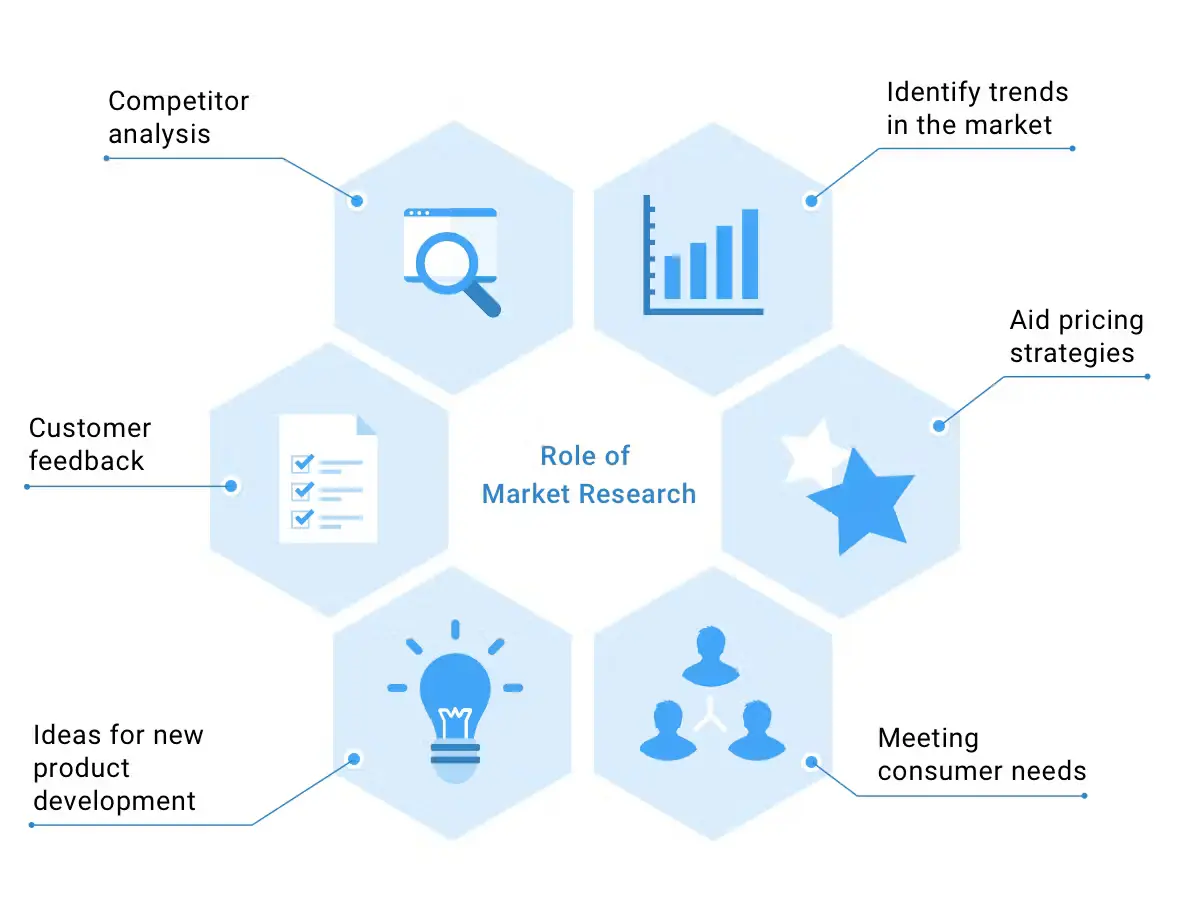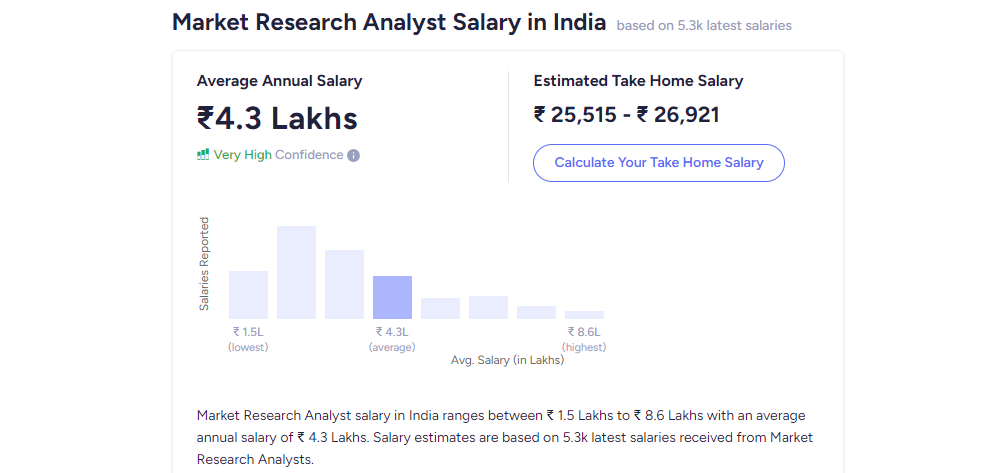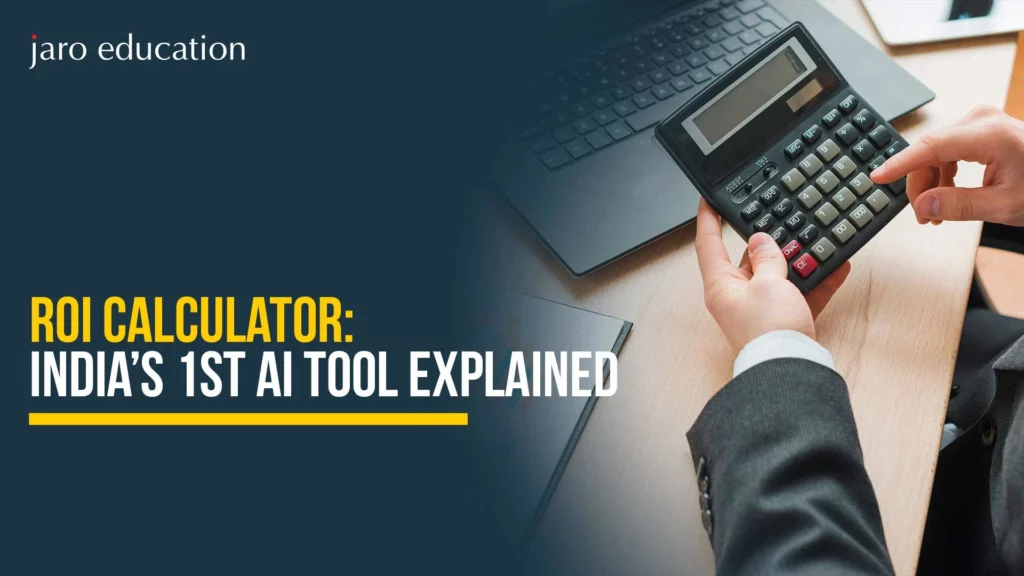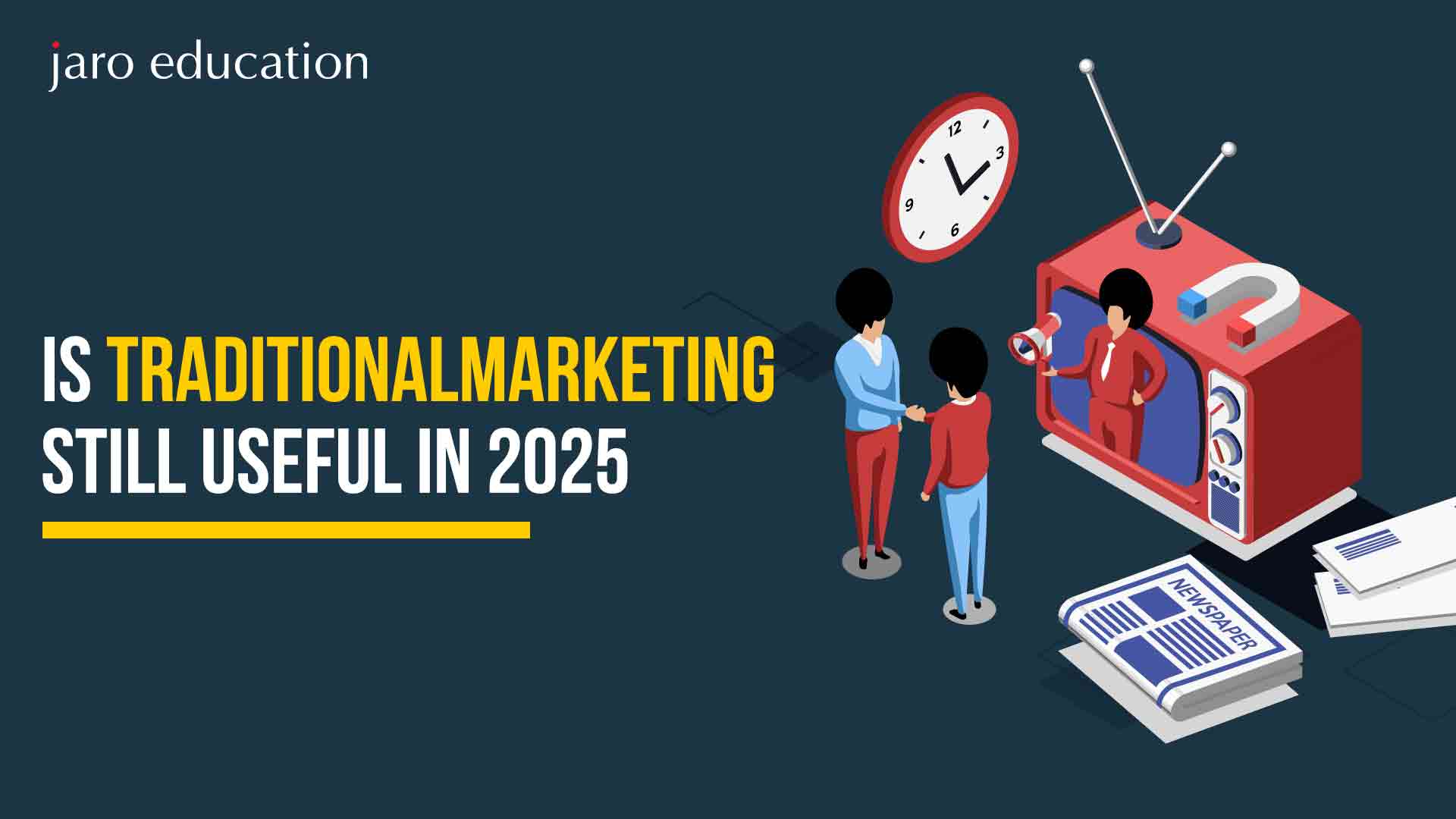Market Research Analyst: Role, Salary, and Career Scope
Table of Contents

Have you noticed recently that every time you come across an ad, it just seems to read your mind, or a product shows up right when you need it, and that’s not luck? Somebody’s actually working behind the scenes to make that happen, to bring in the relevance: a market research analyst
While these professionals are crunching numbers on one side, flip the coin and that stat is now influencing what makes people (target audience) tick. They dig into customer habits, pick apart sales data, track trends, all to help companies make smarter and precise decisions. Something that you call hyper-personalization.
So, if you’re the type of person who enjoys looking at data and thinking, “Hmm, what’s really going on here?” you might actually love this profession. Why so? This is because marketing analysts play a crucial role in assisting businesses in better understanding their audience, refining their advertising strategies, and determining the most effective areas to allocate their budget for maximum return.
Excited to know more about the field? Then get ready, as this blog is your ultimate guide to understanding what a marketing analyst really does and how you can step into this exciting career yourself.
Why the Market Research Analyst Role Is Booming in 2025

*ccslearningacademy.com
The explosive demand for analyst professionals is no coincidence; there are some solid reasons, such as:
- Data Explosion: Every click, search, and swipe generates data.
- Global Competition: Companies need sharper insights to stay ahead.
- Customization: Personalized experiences require granular market data.
- AI Integration: Analysts now guide algorithms, making human judgment even more critical.
The Hidden Power of Market Research Analysts
For those thinking about the versatility of this role, well, do you know market research analysts don’t just report data; they also influence it? They are part of:
- Product launches
- Marketing campaigns
- Pricing models
- Strategic partnerships
- Mergers and acquisitions
In fact, in some of the organizations, a skilled market research analyst holds more sway than middle management. The reason? Simply because they own the facts.
Mini Quiz: Can You Think Like a Market Research Analyst
Q1. Which age group is most likely to adopt fintech apps fastest in 2025?
- A. 18–24
- B. 25–34
- C. 35–44
- D. 45–60
Q2. If 82% of customers bounce off your landing page in under 3 seconds, what’s the first metric to explore?
- A. Product reviews
- B. Pricing structure
- C. Page load time
- D. Color palette
Q3. You discover that users in Tier 2 cities spend 3x more time on your app than metro users. What’s your next step?
- A. Run brand awareness campaigns in metros
- B. Launch loyalty program in Tier 2 cities
- C. Stop targeting metros altogether
- D. Reduce marketing spend
Q1 – Answer: B. 25–34
Q2 – Answer: C. Page load time
Q3 – Answer: B. Launch loyalty program in Tier 2 cities
If you got them all right, you’re already thinking like a Market Research Analyst!
If you got 1-2 right: Great start; your analytical mind is on point. A little more sharpening and you’ll be prepared to align your mindset strategically.
If you got 0 right: No worries! Every expert begins by learning, and through upskilling, you can be on the perfect path.
Market Research Analyst Salary Structure

*collegevidya.com
Now, the most crucial part: if you’re investing time to master the art of data-driven decision-making, one key question naturally follows:
Is this role financially rewarding?
And the answer is yes, actually increasingly so.
However, it is important to note that the financial potential for a market research analyst varies depending on the industries, experience levels, and certifications. Here’s an overall view to set the stage:
| Career Stage | Designation | Salary Range (₹) |
|---|---|---|
| 0-2 yrs | Junior Analyst | ₹3.5 LPA – ₹5.5 LPA |
| 3-5 yrs | Market Research Analyst | ₹6 LPA – ₹10 LPA |
| 6-10 yrs | Senior Analyst/Team Lead | ₹12 LPA – ₹20 LPA |
| 10-15 yrs | Manager/Director | ₹25 LPA – ₹40 LPA |
| 15+ yrs | VP/Head of Insights | ₹45 LPA – ₹70 LPA+ |
One critical insight: Market research analyst pay often increases sharply after you cross 5 years, largely because seasoned analysts not only interpret data but also start leading teams, advising C-suite executives, and influencing million-dollar decisions.
What Drives Your Market Research Analyst Pay
Here’s where you can control your destiny. Multiple factors directly affect how much you earn:
1. Industry Vertical
Some industries pay significantly more:
- Financial services
- Healthcare & pharmaceuticals
- Tech & SaaS companies
- Consulting firms
2. Skill Set Depth
Mastering additional tools can considerably bump your market research analyst salary, such as:
- SQL
- Python/R for predictive analytics
- Tableau/PowerBI for visualization
- AI/ML modeling
3. Certifications & Education
Advanced degrees, specialized certifications, and executive programs heavily influence compensation.
4. Location
Metro cities & global hubs offer higher packages — Mumbai, Bangalore, Delhi NCR, and Hyderabad lead in India.
5. Communication & Storytelling Skills
Hard truth: the highest-paid market research analysts aren’t just data wizards, they’re data storytellers who translate complexity into boardroom decisions.
Overall, while market research analyst salary reports give nice averages, here’s the real differentiator: The analysts who master both tech AND human behavior rise exponentially faster.
The job market is hungry for professionals who can not only run regression models but also advise CXOs on what those models mean for business outcomes.
Career Scope — Is the Market Research Analyst Role Future-Proof
In a world where entire professions are being disrupted by Artificial Intelligence, automation, and globalization, one burning question dominates career planning today:
“Will my role still exist 10 years from now?”
For the market research analyst, the answer isn’t just ‘yes’ — it’s ‘absolutely’. But, like all elite careers, it demands evolution.
Let’s break down exactly why this role is future-proof and how you can stay ahead of the curve.
Demand for Market Research Analysts: Still Surging Globally
As businesses face increasingly complex, volatile markets, they need market research analysts more than ever to help answer:
- Where are new markets emerging?
- What are shifting customer behaviors?
- How do we adapt products to evolving demand?
- Which risks should we anticipate?
Industries Fueling the Next Wave of Market Research Analyst Jobs
Here’s where demand is exploding:
| Industry | Why They Need Market Research Analysts |
| Healthcare & Pharma | Vaccine rollout strategies, patient preferences, clinical trial feasibility |
| Finance & Fintech | Consumer lending behavior, investment patterns, wealth management trends |
| E-commerce & Retail | Hyper-personalized customer journeys, predictive product demand |
| Technology | SaaS product adoption, churn prediction, user segmentation |
| Sustainability & ESG | Consumer sentiment towards green products, regulatory compliance analysis |
Market research analysts are now no longer just “nice to have.” They’re mission-critical.
The Real-World Skills Market Research Analysts Actually Use in 2025
In today’s data-saturated work environment, your job title isn’t your identity; your skills are. Especially for those aiming to pivot into market research, the goal isn’t to master everything under the analytics sun. It’s about sharpening the few tools that truly move the needle.
Let’s break down the essentials.
1. Analytical Tools That Get You Hired
As a pro market research analyst, surface-level spreadsheet knowledge won’t cut it. You’ll need tools that help you ask better questions and uncover deeper insights.
- SQL: This is where your data lives. Whether it’s sales figures or customer interactions, SQL lets you extract and explore the patterns.
- Tableau or Power BI: These tools let you package complex trends into clear, digestible visuals. The goal? Build dashboards that not only look sharp but tell a compelling story.
- Python or R (at a working level): No need to be a full-stack data scientist. But being able to run basic scripts or automate repetitive analysis? That’s gold for your career and gives you a significant career edge.
While it may seem overwhelming, the purpose is not to be fluent in all of them. Instead, showing that you can go beyond just surface-level metrics and that makes you highly stand out
2. Business Thinking Beats Buzzwords
We read this in the intro too: Strong analysts don’t just crunch numbers. They go further into it and uncover what those numbers actually mean for the business. Wondering how? Here are a few essential steps that are followed:
- Ask sharper questions: It’s not just “Why are our conversions down?” It’s “Why are conversions dropping in urban clusters among first-time users?”
- Know your domain language: Retail? Understand AOV, seasonality, and customer lifecycle. Healthcare? Get familiar with terms like patient retention and claim frequency.
- Tie data to impact: Whether you’re talking to product heads or marketing leads, speak the language of ROI and outcomes.
3. Communication Is Your Quiet Superpower
You could be sitting on gold-level insights, but if no one understands them, they’re just noise. So be prepared to act as the bridge between the numbers and the decision-makers.
Don’t worry, it’s not as hard as it seems, and to even ease the process, here are some powerful ways to present your insights:
- Craft a narrative: Every report should flow like a story. To get this, start with what’s happening, explain why, and end with what should happen next.
- Adapt to your audience: Talking to a tech team? Dive into data integrity. Presenting to the CMO? Stick to customer behavior shifts and revenue implications.
- Stay curious: The best insights often start with a question no one else thought to ask. So, be the one.
4. Turn Your Past Roles into Analytical Assets
For those switching lanes, it doesn’t mean you have to start from zero. In fact, your existing experience might be your biggest asset. Let us know how:
- If you are from sales, you might already know how to read the revenue pipeline. You can apply that to customer lifecycle data.
- From marketing? Then you would already understand the campaign impact. So now all that you have to do is just dive deeper into attribution or segmentation.
- And for those into client servicing, you’ve been a translator between business needs and execution teams, which is perfect prep for insight delivery.
How to Upskill in the Market Research Domain
As a working professional, your time is very limited. You’ve got meetings, targets, and deadlines.
So, here’s how to build your skill set while staying in the game:
- Choose short, project-based workshops and online degrees instead of traditional methods.
- Participate in weekend sprints or hybrid masterclasses that let you learn from real peers, not just pre-recorded videos.
- Start small at work: analyze existing sales or customer data from your current role. Build your first case study using what you already have.
- Pitch for cross-team opportunities. Even an internal project analyzing churn or engagement can become your entry point.
Smart growth isn’t about leaving your job to learn. It’s about learning where you are.
How Jaro Education Can Advance Your Career in Market Research
At Jaro Education, renowned as India’s top upskilling platform, our programs are specifically tailored for working people who are looking to transition or upskill without taking any career break.
Here is how we empower your career journey:
- Our courses are in partnership with prestigious B schools, like Adani Institute, IIM Mumbai, IIM Nagpur and the list goes on.
- We provide specializations in business intelligence, digital strategy, and marketing analytics
- You will get to interact with industry-standard tools such as Tableau, Power BI, Python, and SQL
- For flexible and engaging learning, we offer a blend of live sessions, weekend formats, and campus immersion.
- Placement assistance, resume building, and mentoring
Interested in learning more? Visit our website right away!
Final Thought
The key takeaway? You don’t need to be the loudest, the fastest, or even the most “technical” person in the room.
You just need to be the one who listens to the data, to the business, and to your own curiosity.
Moving into a market research analyst role isn’t about becoming someone else. It’s about recognizing how much of that person you already are.
Frequently Asked Questions
Is becoming a market research analyst a smart move in 2025?
Honestly, yes—and not just because it’s trendy. It’s because of the way companies are clinging to data to make sense of shifting markets. Someone needs to untangle all that information and turn it into something useful. That “someone” is often a market research analyst. If you like patterns, people, and a bit of puzzle-solving, you’ll probably thrive here.
Do I need to be from a technical background to get into market research?
Not really. If you’re the kind of person who likes asking “why” a lot—and you’re okay digging into numbers to get that answer—you’re already halfway there. Tools can be learnt. That mindset? That’s harder to teach.
How do I increase my earning potential within 2–3 years?
Here’s the play: get comfy with tools like Tableau or Power BI. Maybe throw in Python if you’re up for it. But also, don’t just focus on the data. Learn how to explain it like you’re telling a story. The kind that makes a CMO sit up straight. That combo? Game-changer for your paycheque.
Can I explore this career path without quitting my current job?
Absolutely! The idea is to start behaving like an analyst before you even have the title. That way, when you do make the switch, it doesn’t feel like starting from scratch.
What industries are hiring the most market research analysts right now?
Tech, healthcare, and e-commerce are major players—but don’t overlook BFSI and even education tech. Anywhere decisions rely on user insights, a market research analyst has a seat at the table. These sectors value analysts who can blend consumer behavior with business acumen.
Is the market research analyst salary competitive compared to similar roles?
Yes, especially when you factor in long-term growth. While entry-level market research analyst salaries may start modestly, professionals with 3–5 years of experience and strong toolkits can easily outpace peers in adjacent roles like brand execs or marketing associates.
How important are certifications in boosting my market research analyst pay?
Certifications alone won’t skyrocket your earnings, but paired with real-world application, they can be powerful. Employers often see them as proof you’re serious about the craft, especially when they align with skills in demand like data visualization or consumer psychology.

















